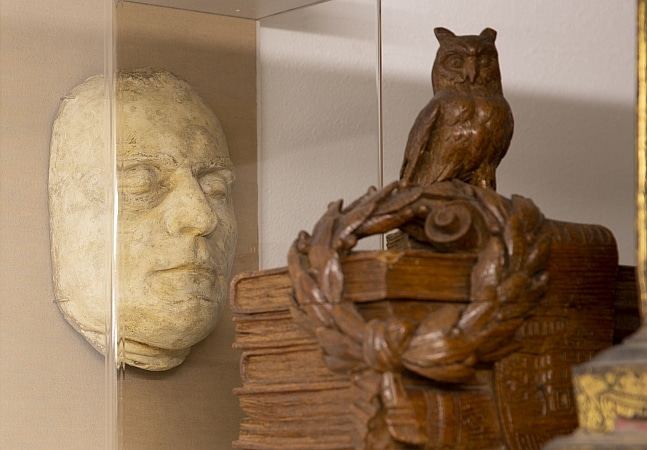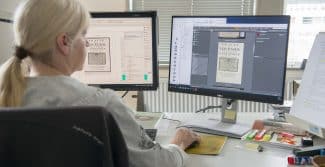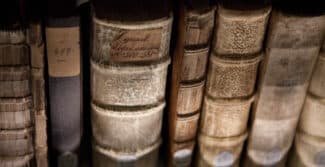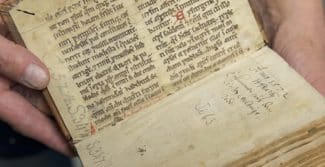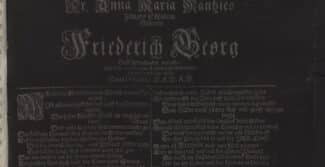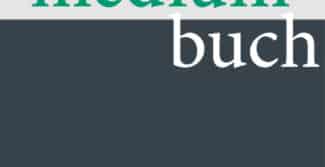Globes
The library owns ten globes dating from the 16th to 18th centuries. The oldest of them came from Gerhard Mercator’s workshop in 1541. Further highlights are two large, late 16th-century terrestrial and celestial globes by an unknown master. They are elaborately crafted out of wood and magnificently painted with oils. Duke Heinrich Julius is said to have acquired them in Prague and they once belonged to the university of Helmstedt. The other globes are from the Netherlands (made by Willem Janszoon Blaeu and his son Joan and by Gerhard Valck) and from Nuremberg (made by Johann Gabriel Doppelmayer). Five globes are on display in the globe gallery of the Bibliotheca Augusta.
Literature:
- Yorck Alexander Haase, Alte Karten und Globen in der Herzog August Bibliothek Wolfenbüttel, Kleine Schriften der Herzog August Bibliothek 3 (Wolfenbüttel, 1972).
- Arend Lang, Das Kartenbild der Renaissance: Ausstellung der Herzog-August-Bibliothek Wolfenbüttel; 10. Mai bis 27. September 1977, exh. cat. Herzog August Bibliothek 20 (Wolfenbüttel, 1977).
- Christian Heitzmann, Europas Weltbild in alten Karten: Globalisierung im Zeitalter der Entdeckungen, exh. cat. Herzog August Bibliothek 85 (Wolfenbüttel, 2006).
Busts
The Herzog August Bibliothek owns a number of busts, including likenesses of Diogenes, Hippocrates, Homer, Seneca, Socrates, Dante, Shakespeare, Duke August the Younger, Leibniz, Lessing and Goethe. It also owns several death masks, including that of Lessing.
Furniture
The library has a collection of historical furniture (chairs, shelves, cabinets), some of which originates from the old Salzdahlum Palace.
Cultural history collection
The library owns a number of historical objects of cultural interest, including a drinking glass, an inkwell and a spoon that belonged to Martin Luther, a number of medals and a Copernican tellurium (planetarium model) made in Holland by Willem Janszoon Blaeu between 1616 and 1634.
Literature on Martin Luther memorabilia (illustrated):
- Hole Rößler (ed.), Luthermania: Ansichten einer Kultfigur (Wiesbaden, 2017), pp. 140–144 (drinking glass), pp. 134–135 (spoon), pp. 115–121 (inkwell).
Literature on the tellurium:
- Christian Heitzmann, Die Sterne lügen nicht: Astrologie und Astronomie im Mittelalter und in der Frühen Neuzeit (Wiesbaden, 2008), pp. 232–233.
- Focus Behaim Globus, vol. 2, Katalog (Nuremberg, 1992), p. 537.
- Ludolf von Mackensen, Die naturwissenschaftlich-technische Sammlung in Kassel (Kassel, 1991), pp. 66–67.
- Ludolf von Mackensen, Die erste Sternwarte Europas mit ihren Instrumenten und Uhren: 400 Jahre Jost Bürgi in Kassel (Munich, 1979), pp. 99–102.
Maps
The map collection can be traced back to the very beginnings of the library. Today, more than 4,500 loose sheet maps make up the HAB’s map collection as such. In addition, there are around 120 early modern atlases that are shelved together with the printed works. The loose maps include a number of precious and rare maps, such as the Portuguese, Spanish and Italian portolan charts drawn on parchment (Cod. Guelf. 98–104 Aug. 2°) and the 16th-century printed wall maps that are the oldest and only preserved copies of their kind: the map of the Holy Roman Empire by Christoph Pyramius (engraving, Brussels, 1547), the Rhine map by Caspar Vopel (Cologne, 1555), the ‘Caerte van Oostland’ (the Baltic region) by Cornelis Anthonisz (Amsterdam, c.1560), the oldest maps of Poland and Russia and much else besides.
The rich regional holdings are a special highlight of the collection. In line with the prince’s main collecting interests, the territories of the Duchy of Braunschweig-Lüneburg and those adjacent to it are well represented. About half the c.950 maps depicting the territories of the Holy Roman Empire German Reich are devoted to this region. Of the major countries of Europe, Italy and France are best represented, with 98 and 82 maps respectively. Other notable items in the holdings are the 49 maps of Russia and Siberia and 23 of Poland and the Baltic – including the first printed map of Russia made by the Danzig cartographer Anton Wied in 1555, a unique holding. A gift of over 400 maps of Greece and the eastern Mediterranean (Wagner Collection) considerably expanded the holdings in 2012. The number of maps of non-European countries, including portrayals of the Old World, is comparatively small (286 sheets); the majority of them are of North Africa, Palestine, Turkey and the Near East.
Listing: The holdings are being successively entered in the old maps database IKAR, which currently contains entries for roughly 2,300 of the HAB’s maps. Other sections of the holdings (currently more than 570 maps) have been catalogued in depth in the Virtuelles Kupferstichkabinett (Virtual Print Room; search term ‘Landkarte’, with digital copies).
Hermann Zapf Collection
Hermann Zapf (1918–2015) was one of the 20th century’s most important book and typeface designers. He authored the famous Manuale typographicum and designed more than 80 typefaces. From 1991 onwards he began gradually making over parts of his extensive collection to the HAB. The collection includes the typeface and book designs and signets that Hermann Zapf produced for German and foreign publishers; bibliophile editions; handwritten letters and documents about copyright protection for typefaces; material collections about calligraphy, lead typesetting, phototypesetting and digital typesetting; documents on the history of typefaces in various countries; and specialist literature. It is currently being indexed and catalogued in depth.
Listing: The Hermann Zapf library is entered in the online public access catalogue (OPAC).
A permanent exhibition in the painter’s book gallery of the Bibliotheca Augusta shows a representative selection from the collection.
Literature: Sammlung Hermann Zapf, exh. cat. Herzog August Bibliothek Wolfenbüttel (Wolfenbüttel, 1993).
Knut Erichson and John Dreyfus (eds.), ABC–XYZapf: Fünfzig Jahre Alphabet Design (Offenbach/London, 1989)
Playbills
The Herzog August Bibliothek holds a collection of several thousand playbills arranged alphabetically according to place. The holdings for Berlin (487 bills), Braunschweig (612) and Wolfenbüttel (1,560) are particularly extensive. The main emphasis is on the 19th century.
The playbills can be examined in the manuscripts reading room (Bibliotheca Augusta).
